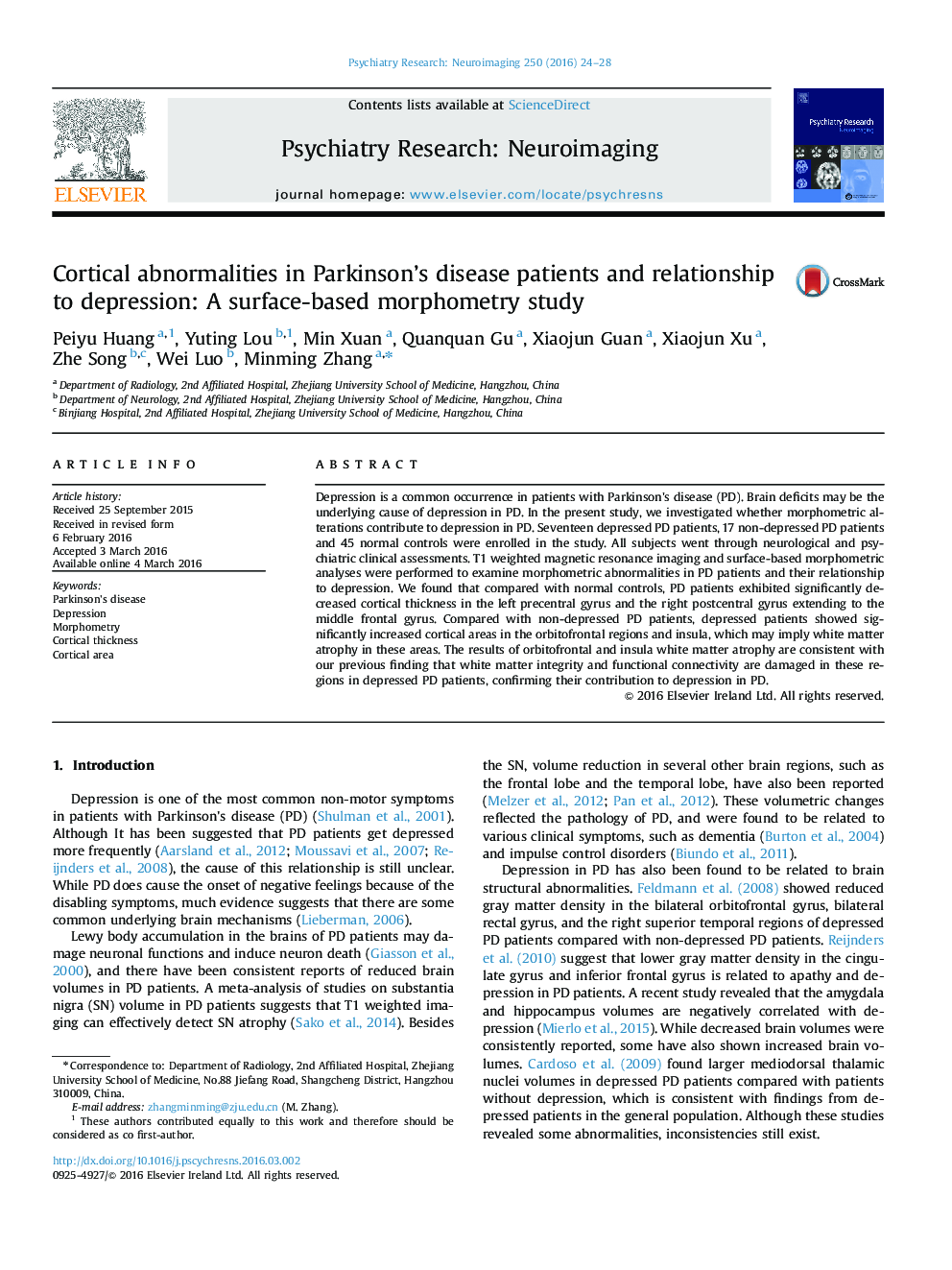| کد مقاله | کد نشریه | سال انتشار | مقاله انگلیسی | نسخه تمام متن |
|---|---|---|---|---|
| 334406 | 546525 | 2016 | 5 صفحه PDF | دانلود رایگان |
• We examined cortical abnormalities in PD patients using surface-based morphometry.
• Cortical thickness was found reduced in the prefrontal cortex of PD patients.
• Depressed PD patients showed increased brain area in orbitofrontal-insula region.
• These results might be helpful for diagnosis and treatment of depression in PD.
Depression is a common occurrence in patients with Parkinson's disease (PD). Brain deficits may be the underlying cause of depression in PD. In the present study, we investigated whether morphometric alterations contribute to depression in PD. Seventeen depressed PD patients, 17 non-depressed PD patients and 45 normal controls were enrolled in the study. All subjects went through neurological and psychiatric clinical assessments. T1 weighted magnetic resonance imaging and surface-based morphometric analyses were performed to examine morphometric abnormalities in PD patients and their relationship to depression. We found that compared with normal controls, PD patients exhibited significantly decreased cortical thickness in the left precentral gyrus and the right postcentral gyrus extending to the middle frontal gyrus. Compared with non-depressed PD patients, depressed patients showed significantly increased cortical areas in the orbitofrontal regions and insula, which may imply white matter atrophy in these areas. The results of orbitofrontal and insula white matter atrophy are consistent with our previous finding that white matter integrity and functional connectivity are damaged in these regions in depressed PD patients, confirming their contribution to depression in PD.
Journal: Psychiatry Research: Neuroimaging - Volume 250, 30 April 2016, Pages 24–28
